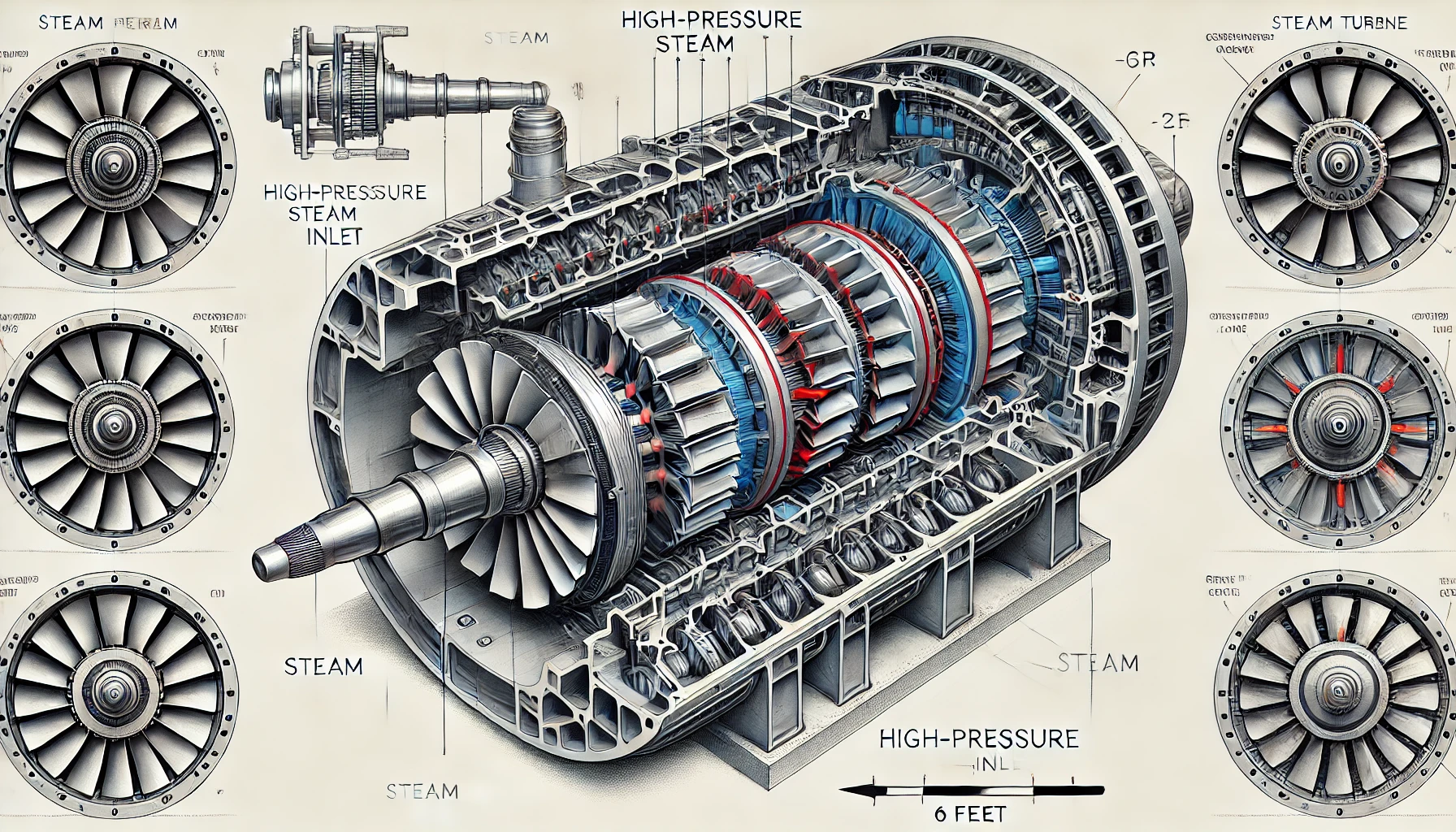
Gen 1 – Open Loop Simplicity
Design Ethos: Build fast. Teach openly. Prove it flies.
- Original Engines: Wright R‑1820 (x2)
- Dry Weight: ~2,600–2,760 lb total
- Wet Weight: ~3,000–3,200 lb incl. oil/fuel
- Why the Shift?: Radials are heavy, oily, noisy — great in their day, but our mission needed flexibility and low-alt performance. Steam offers a smoother torque curve, easier education interface, and a bold platform for innovation.
- Gen 1 Steam Dry Weight: ~800–1,000 lb (turbine + shaft + gearbox)
- Gen 1 Wet Weight: ~1,600–2,000 lb incl. water + plumbing
- Water Tanks: 4× Aluminum Reservoirs (37.5 L each)
- Tank Placement: Inboard wing bays near main spar — serviceable and balanced
- Cycle: Open Steam Exhaust — atmospheric venting
- Boiler: Remote Reservoir + Local Superheat Injector
- Use Case: STEM joyrides, coastal ops, thermal mapping
- Reference Tech: Steam Turbine – Wikipedia

Gen 2 – Reclaim and Recirculate
Design Ethos: Flight efficiency through thermodynamic reuse.
- Cycle: Closed-Loop Steam Reclaim
- Condensers: Wing-mounted radiators
- Flight Profile: Extended range, higher altitudes
- Example Unit: Rankine Cycle Systems

Gen 3 – Bypass Boost Mode
Design Ethos: Variable-cycle steam with manual bypass for climb or combat load.
- Mode: Toggle Reclaim ON/OFF
- Advantage: Bypass = Weight drop = Faster acceleration (F=ma)
- Flight Role: Burst climb, limited chase, field escape
- Example Unit: Combined Cycle Turbines

Component Spec – Candidate Turbines
- Target Power: 1,200–1,700 HP / engine
- Weight Limit: ~1,000 lbs each (dry)
- Size: Comparable to radial piston engines
- RPM Output: 8,000–20,000 RPM (split shaft reduction needed)
- Vendors: Research-grade microturbines, scaled-down steam cores (e.g. Curtis Turbine)